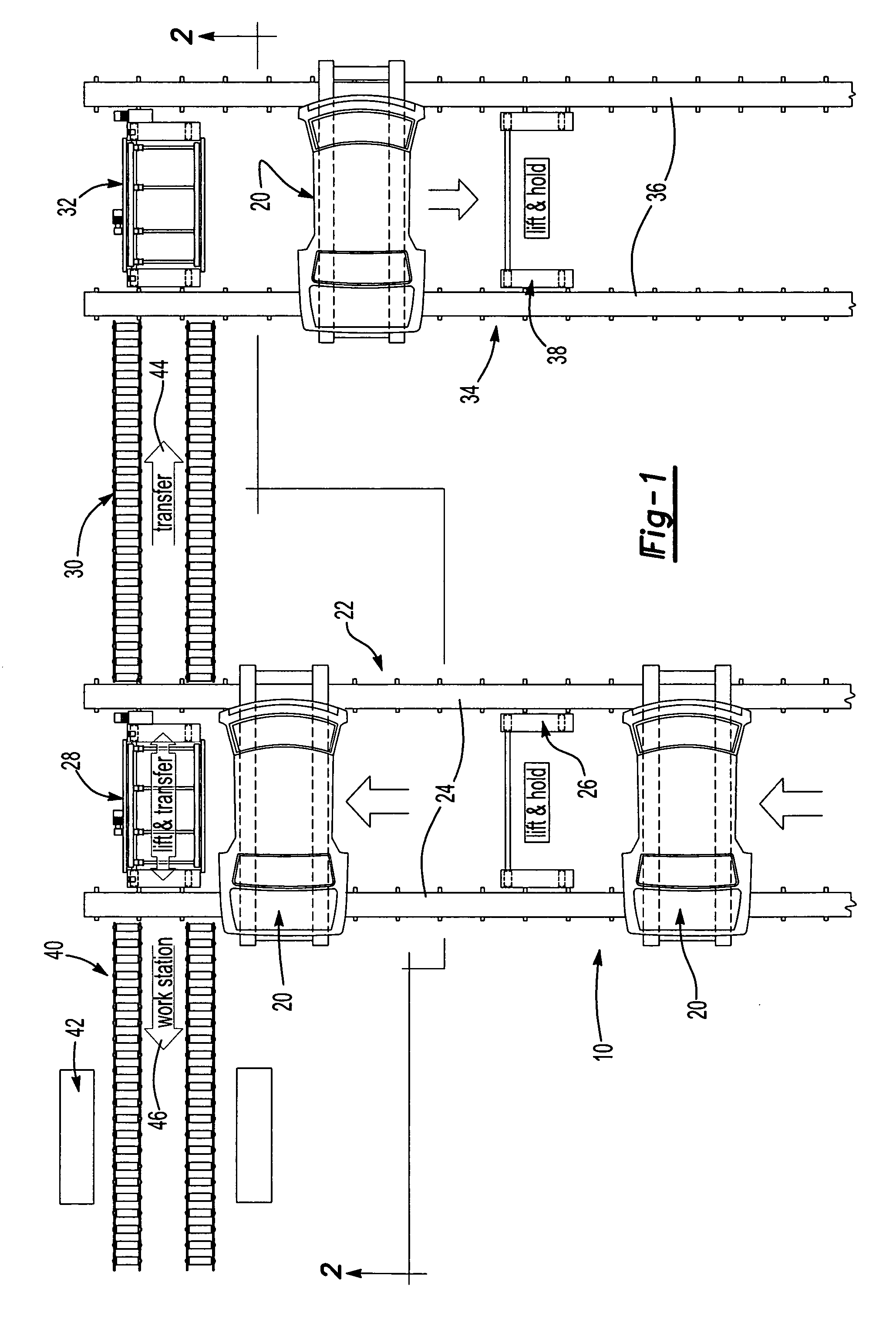Conveyor system and method of conveying elements
a conveying system and conveying system technology, applied in the direction of mechanical conveyors, conveyors, packaging, etc., can solve the problems of inability to use the steel base as a datum for such applications, the steel belt of the conveying conveyor wears and must be frequently replaced, and the inability to accurately locate the point, so as to avoid damage to the conveying conveyor and the conveying elements, the effect of avoiding wear or damage to the pall
- Summary
- Abstract
- Description
- Claims
- Application Information
AI Technical Summary
Benefits of technology
Problems solved by technology
Method used
Image
Examples
Embodiment Construction
[0025] As set forth above, the conveyor system 10 and method of this invention may be utilized to convey elements of any type in a manufacturing or assembly facility, but is particularly useful for transferring heavy elements in a mass production facility, such as vehicle bodies 20 in an automotive manufacturing, assembly or paint facility. As will be understood, however, the conveyor system and method of this invention is not limited to the elements conveyed and the elements may be conveyed with the conveyor system and method of this invention without pallets.
[0026] The embodiment of the conveyor system 10 illustrated in FIG. 1 for transferring or conveying vehicle bodies 20 includes a first conveyor 22 preferably including spaced continuous moving belts 24 as described more fully hereinbelow. The disclosed embodiment of the conveyor system 10 further includes one or a plurality of lift and hold tables 26, more accurately referred to as lift, hold and return tables which, in a pre...
PUM
 Login to View More
Login to View More Abstract
Description
Claims
Application Information
 Login to View More
Login to View More - R&D
- Intellectual Property
- Life Sciences
- Materials
- Tech Scout
- Unparalleled Data Quality
- Higher Quality Content
- 60% Fewer Hallucinations
Browse by: Latest US Patents, China's latest patents, Technical Efficacy Thesaurus, Application Domain, Technology Topic, Popular Technical Reports.
© 2025 PatSnap. All rights reserved.Legal|Privacy policy|Modern Slavery Act Transparency Statement|Sitemap|About US| Contact US: help@patsnap.com



